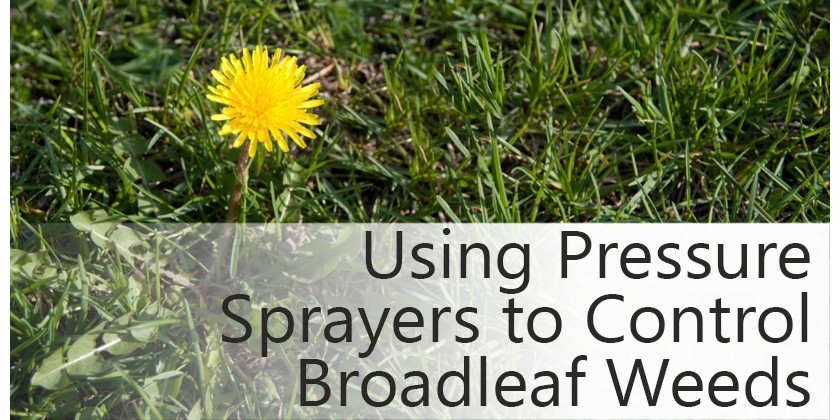
Broadleaf weeds in lawns are a headache for homeowners, as they are some of the peskiest weeds to deal with. The best way to minimize weeds in your lawn is through proper lawn maintenance, including keeping the grass cut to the recommended height for its variety. This helps the grass to flourish, choking the weeds out.
If you do find dandelions or other broadleaf weeds in your lawn, you can remove them by pulling or digging them up by the roots. Another option is to destroy them with broadleaf herbicides.
According to Iowa State University, “The best time to control perennial broadleaf weeds in the lawn with broadleaf herbicides is fall (mid-September through October). In fall, perennial broadleaf weeds are actively translocating carbohydrates to their roots. Broadleaf herbicides applied to the weeds will be absorbed by the foliage and translocated to the plant’s roots along with the carbohydrates. This usually results in the death of the broadleaf weeds.”
Pressure sprayers are excellent tools for safely applying herbicides. Check out these tips for effectively treating with herbicides:
TIPS FOR GETTING THE BEST RESULTS FROM BROADLEAF TREATMENTS:
- Save money by using concentrated formulas in a quality pressure sprayer This saves money over premixed formulas and provide a more effective application.
- Some grasses, particularly warm grasses, can be injured or killed by herbicides. Make sure you are using the correct product for your type of grass.
- Check the label for the correct application temperature. Most herbicides work best between 50 – 85 degrees.
- Mix only the amount you need. Once mixed, most herbicides lose their effectiveness within 2-3 days of mixing.
- Protect your plants from overspray, using plastic or cardboard to cover areas you do not want treated or use a draft guard placed over the nozzle.
- For best results apply early or late in the day, preferably when the ground is dry or only slightly damp. Most formulas recommend no rain for 1-2 days after application.
- Wear appropriate attire, including socks, gloves, glasses, etc. to keep the chemicals off of your skin and away from your eyes.
- Begin at the back of your property, and spray while walking backwards (so you are not walking into areas you just treated.)
- Do not apply herbicides when there is a lot of wind.
- Keep children and pets away from treated areas until dry. Then water the lawn and let it dry before contact. Again, check the label for specific instructions.
- Store herbicides in a cool, dry place, but guard from freezing. And of course, safety first! Store the product safely away from children.
- Always remember to rinse your sprayer well and run clean water through it when you are finished spraying. This ensure the seals do not get damaged and guards against contamination with future chemicals.
You may never be able to fully get rid of these nuisance invaders, but you will be able to minimize their growth and keep them from overtaking your lawn.
For information on Solo sprayers see: us.solo.global
Sources:
“Control of Broadleaf Weeds in the Lawn.” Control of Broadleaf Weeds in the Lawn | Horticulture and Home Pest News, https://hortnews.extension.iastate.edu/2001/8-24-2001/weedylawn.html
